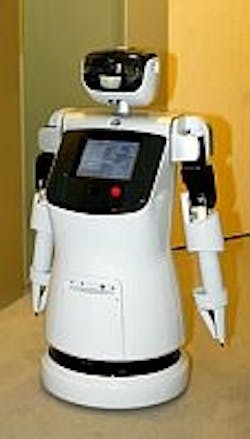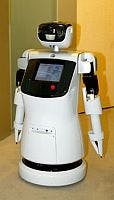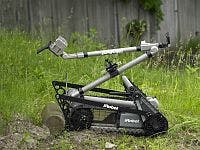CARE project outlines roadmap for service robots
(Courtesy of Fujitsu)Since the 1980s, industrial robots have become commonplace and in recent years cleaning robots have started tidying up in our homes. In 2007 there were an estimated 6.5 million robots around the world; this figure is projected to rise to 18 million by 2011. Europe commands one-quarter of the world market for industrial robots; industry leaders are looking to ensure that the region maintains its position in the future. The EU-funded CARE project (Coordination Action for Robotics in Europe), coordinated by Rainer Bischoff and Tim Guhl of KUKA Roboter (Augsburg, Germany), was set up in 2006 to create a Strategic Research Agenda (SRA) to guide the development of robotics. "We wanted to make sure that a lot of different stakeholders were involved," says Guhl. "And we wanted to have an industrially driven agenda—that was very important." In association with EUROP, the European Robotics Technology Platform, more than 130 organizations participated in developing the agenda over three years. CARE assembled teams in robotics sectors including industrial, professional service, domestic service, security, and space to identify new opportunities for marketable products. A total of 39 were identified, ranging from mining robots to surgical robots and robot teachers. The participants discovered an alternative way to classify robots, by six cross-sector application scenarios: robotic workers, robotic coworkers, logistics robots, robots for surveillance and intervention, robots for exploration, and inspection and "edutainment" robots.
(Courtesy of iRobot)
"If you look at each of the application scenarios, their product visions have similar requirements," says Guhl. "But as the product visions come from various sectors, it follows that cross-fertilization may be greatly beneficial. The SRA highlights where there are similarities and where the sectors can support each other; where technology developed within space robotics, for example, might become useful for domestic service robotics or the other way round."
There is no one technology called "robotics." In fact, 18 different groups of technologies are identified in the report and many of the product visions make use of all of them; this can make it difficult to know where to focus development efforts. The basic question to ask, says Guhl, is whether a technology is driven by robotics or not.(Courtesy of iRobot)"Batteries, for example, are very important for mobile robotics," he says. "But a lot of money is already going into developing batteries for the automotive industry and for mobile devices. On the other hand, you have technologies like autonomous navigation. This technology is mostly driven by roboticists, but is also integrated in automobiles which you would normally not classify as robots. So some technologies need to be driven by robotics and some don't." The agenda lists eight conclusions, or "commandments," that the robotics community needs to adopt if it is to make the most of the available opportunities. A significant challenge with robotics is the integration of many different technologies into coherent systems, which has implications in areas such as education. The SRA advises that a European supply chain is needed to reduce dependence on overseas suppliers; research should concentrate on the key, robotics-driven technologies; and more effective work between academia and industry and greater cooperation between the traditional sectors is required to create new markets. The abundance of technologies also leads to unconventional education and training needs. "You don't need specialists in one or two areas to sit around a table and come up with a good product," notes Guhl. "You need a number of different specialists, sometimes having knowledge of a numerous disciplines—such as mechatronics engineers—speaking the same language.” Social, legal, and ethical issues also need to be anticipated if robots are to play a greater part in our lives and carry out some of the functions normally done by human beings. A successor project, euRobotics, is planned to enact the agenda, and as Guhl says, "get the whole community working together more closely." CARE received funding from the ICT strand of the EU's Sixth Framework Programme for research. SOURCE:ICT Results-- Posted by Vision Systems Design



